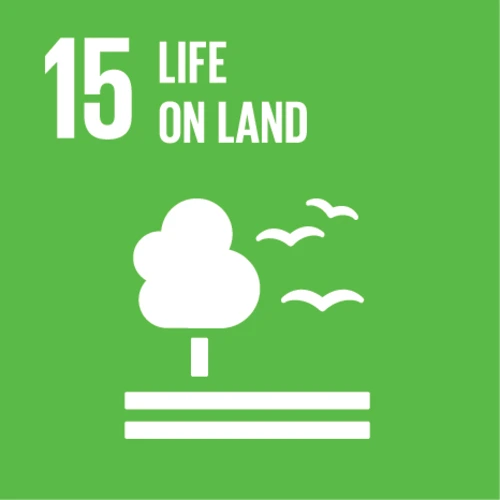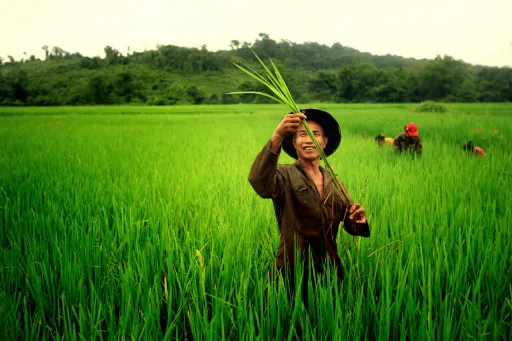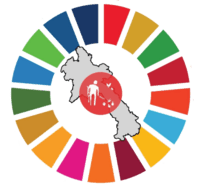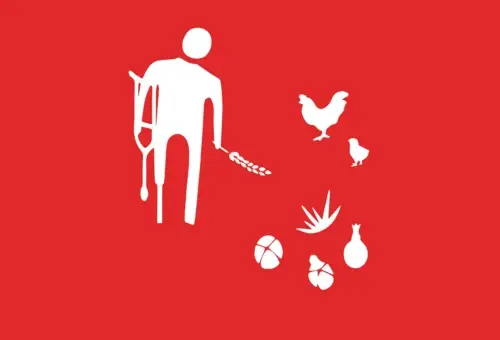
Protect, restore and promote sustainable use of terrestrial ecosystems, sustainably manage forests, combat desertification, and halt and reverse land degradation and halt biodiversity loss

15.1 By 2020, ensure the conservation, restoration, and sustainable use of terrestrial and inland freshwater ecosystems and their services, in particular forests, wetlands, mountains, and drylands, in line with obligations under international agreements.
15.2 By 2020, promote the implementation of sustainable management of all types of forests, halt deforestation, restore degraded forests, and substantially increase afforestation and reforestation globally.
15.3 By 2030, combat desertification, restore degraded land and soil, including land affected by desertification, drought, and floods, and strive to achieve a land degradation-neutral world.
15.4 By 2030, ensure the conservation of mountain ecosystems, including their biodiversity, to enhance their capacity to provide benefits that are essential for sustainable development.
15.5 Take urgent and significant action to reduce the degradation of natural habitats, halt the loss of biodiversity, and, by 2020, protect and prevent the extinction of threatened species.
15.7 Take urgent action to end poaching and trafficking of protected species of flora and fauna and address both demand and supply of illegal wildlife products.
15.8 By 2020, introduce measures to prevent the introduction and significantly reduce the impact of invasive alien species on land and water ecosystems and control or eradicate the priority species.
15.9 By 2020, integrate ecosystem and biodiversity values into national and local planning, development processes, poverty reduction strategies, and accounts.
15.a Mobilize and significantly increase financial resources from all sources to conserve and sustainably use biodiversity and ecosystems.
15.b Mobilize significant resources from all sources and at all levels to finance sustainable forest management and provide adequate incentives to developing countries to advance such management, including for conservation and reforestation.
15.c Enhance global support for efforts to combat poaching and trafficking of protected species, including by increasing the capacity of local communities to pursue sustainable livelihood opportunities.
15.1.1 Percentage of forest area as a percentage of total land area.
15.1.2 Percentage of land area covered by National Protected Areas, provincial and district protected areas.
15.2.1.a Production forest area with certification in hectares (e.g., FSC, FLEGT).
15.2.1.b Forest area with management plans in million hectares.
15.3.1 Percentage of rural villages reporting land degradation:
- Light
- Moderate
- Severe
15.4.1 Proportion of land area under protection.
15.5.1 Number of species threatened with extinction.
15.7.1 Proportion of traded wildlife that was poached or illicitly trafficked (total wildlife seizures to total wildlife traded/export permits issued).
15.8.1 Adoption of national legislation relevant to the prevention or control of invasive alien species.
15.9.1 Progress towards biodiversity national targets, as reported by NSEDP.
15.a.1.a Net official development assistance provided for biodiversity/ecosystems (US$).
15.a.1.b Public expenditure on biodiversity/ecosystems.
15.b.2.a Net official development assistance provided for forestry/forest development (US$).
15.b.2.b Public expenditure on forestry/forest development.
15.c.1 Proportion of traded wildlife that was poached or illicitly trafficked.


















